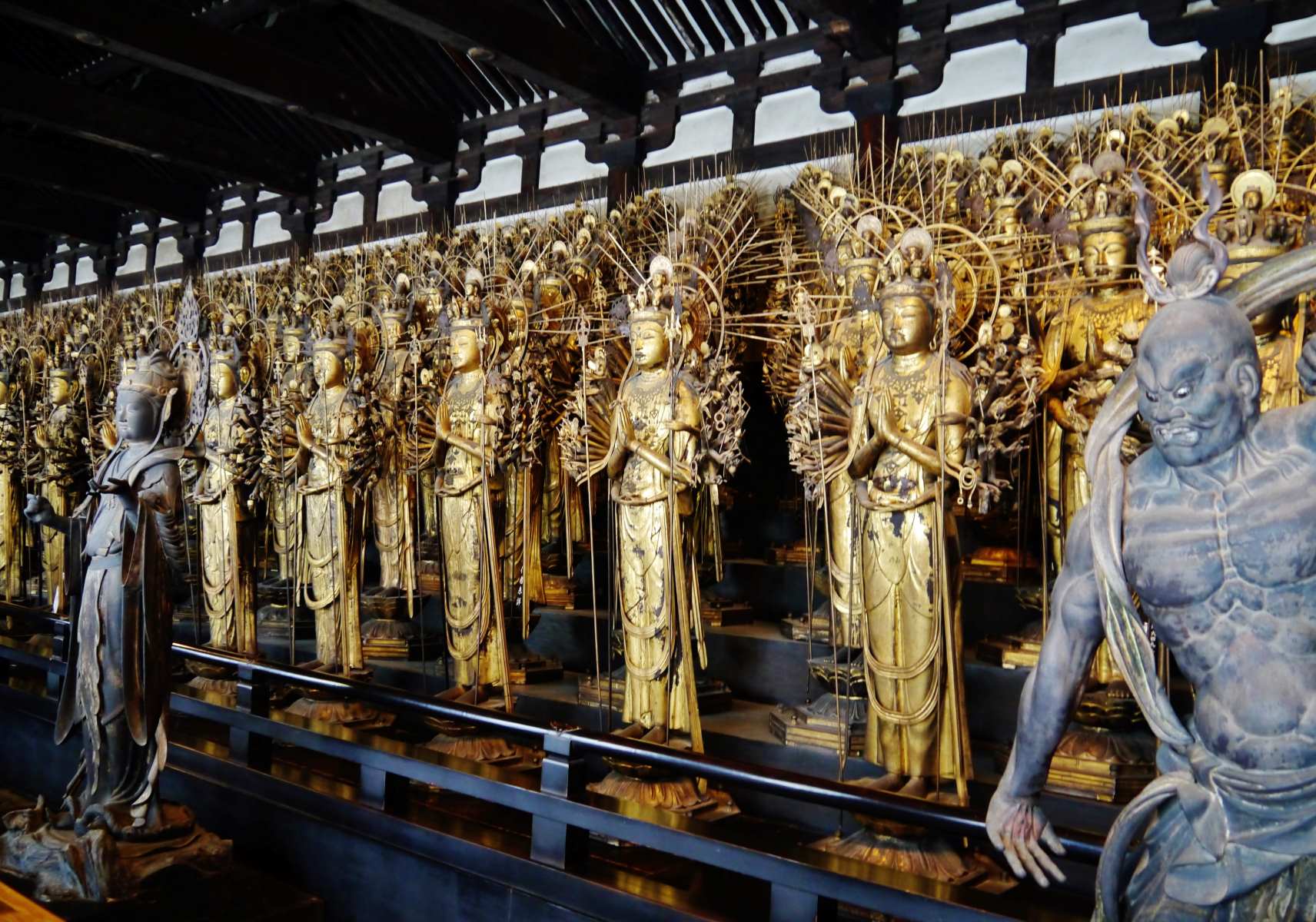
Key Takeaways:
- Sanjusangendo is a historic Buddhist temple in Kyoto, Japan, known for its 1,001 Thousand Armed Kannon statues and as the longest wooden structure in the country.
- Visitors can enjoy cherry blossom viewing, cultural activities, and find inner peace at Sanjusangendo, a place of spiritual reverence and rich historical significance.
Historical Significance
Sanjusangendo is a Buddhist temple located in Kyoto, Japan. It was built in the 12th century and holds great historical significance as a cultural treasure of the nation.
Longest Wooden Structure
The main hall of Sanjusangendo is renowned for being the longest wooden structure in Japan, measuring approximately 120 meters in length. Its impressive architecture is a marvel to behold.
Thousand Armed Kannon Statues
The main attraction of Sanjusangendo is the presence of 1,001 statues of the Thousand Armed Kannon, a bodhisattva associated with compassion. These statues were crafted in the 13th century and are a remarkable sight to see.
Precise Arrangement
The Thousand Armed Kannon statues are placed meticulously in 10 rows, with the principal statue positioned in the center. This arrangement creates a visually stunning display that captivates visitors.
Impressive Height
Each statue in Sanjusangendo stands at an impressive height of approximately 3.3 meters. The meticulous details and artistic craftsmanship of these statues are truly awe-inspiring.
The Legend of Archer Ushiwakamaru
According to legend, the famous warrior Minamoto no Ushiwakamaru (also known as Minamoto no Yoshitsune) once used Sanjusangendo as a practice range for his archery skills. The temple still holds archery competitions to honor this legend.
Cherry Blossom Viewing
Sanjusangendo is surrounded by beautiful cherry blossom trees, making it a popular spot for hanami (cherry blossom viewing) during the spring season. Visitors can enjoy the serene beauty of the temple grounds while admiring the blooming cherry blossoms.
Historical Events
Over the centuries, Sanjusangendo has witnessed several significant historical events and has served as a place of refuge during times of war. It stands as a witness to the rich cultural heritage of Japan.
Cultural Activities
Sanjusangendo not only offers visitors a chance to experience the beauty of Buddhist art and architecture but also hosts various cultural activities such as traditional tea ceremonies and calligraphy workshops, providing a deeper understanding of Japanese traditions.
Spiritual Reverence
Sanjusangendo is a place of spiritual reverence and tranquility. Many visitors come to the temple to meditate, find inner peace, and seek solace in its serene atmosphere.
Conclusion
Sanjusangendo is truly a remarkable landmark with a rich history and unique features that make it a must-visit destination. From its stunning architecture and mesmerizing statues to its cultural significance and historical importance, there is no shortage of fascinating facts to discover about Sanjusangendo.Whether you are a history enthusiast, an architecture lover, or simply looking for a spiritual experience, Sanjusangendo offers a captivating journey into Japan’s past. Its long-standing presence and preservation efforts make it a testament to the country’s cultural heritage.Don’t miss the opportunity to witness the beauty and grandeur of Sanjusangendo. Plan a visit and immerse yourself in the awe-inspiring atmosphere that this landmark has to offer. You won’t be disappointed by the rich history, artistry, and spiritual significance that await you at Sanjusangendo.
FAQs
Q: What is the history behind Sanjusangendo?
A: Sanjusangendo, also known as Rengeo-in Temple, was built in 1164 during the Heian period. It was commissioned by Emperor Go-Shirakawa and holds great significance in Japanese history.
Q: How many statues are there in Sanjusangendo?
A: Sanjusangendo is home to 1,001 statues of the Buddhist deity, Kannon. The main statue, known as the Thousand-Armed Kannon, is flanked by 500 statues on each side, creating an awe-inspiring display.
Q: Is photography allowed inside Sanjusangendo?
A: No, photography is not permitted inside the temple. This rule is in place to preserve the delicate statues and maintain the sanctity of the space.
Q: Can visitors enter the main hall of Sanjusangendo?
A: Visitors are allowed to enter the main hall of Sanjusangendo. However, shoes must be removed before entering, and silence must be maintained to respect the spiritual atmosphere.
Q: Are there any special events or ceremonies held at Sanjusangendo?
A: Yes, Sanjusangendo hosts several special events and ceremonies throughout the year. The most notable event is the Toshiya archery festival held in January, where archers showcase their skills in the temple grounds.
Q: How long does a typical visit to Sanjusangendo last?
A: A visit to Sanjusangendo usually lasts around 30 minutes to an hour depending on the individual’s interest in exploring the temple and its exhibits.
Q: Is there an admission fee to enter Sanjusangendo?
A: Yes, there is an admission fee to enter Sanjusangendo. The fee is used for the maintenance and preservation of the temple and its artifacts.
Q: Is Sanjusangendo easily accessible for visitors with mobility issues?
A: Sanjusangendo has wheelchair accessible entrances and is relatively accessible for visitors with mobility issues. However, it is advised to check with the temple beforehand for any specific assistance or accommodations needed.
Q: Are there any restrictions on clothing when visiting Sanjusangendo?
A: Visitors are required to dress modestly when entering Sanjusangendo. Avoid wearing revealing clothing or items that may disrupt the spiritual atmosphere of the temple.
Q: Can I purchase souvenirs at Sanjusangendo?
A: Yes, there is a gift shop near the exit of Sanjusangendo where visitors can purchase souvenirs related to the temple and its history.
Was this page helpful?
Our commitment to delivering trustworthy and engaging content is at the heart of what we do. Each fact on our site is contributed by real users like you, bringing a wealth of diverse insights and information. To ensure the highest standards of accuracy and reliability, our dedicated editors meticulously review each submission. This process guarantees that the facts we share are not only fascinating but also credible. Trust in our commitment to quality and authenticity as you explore and learn with us.
